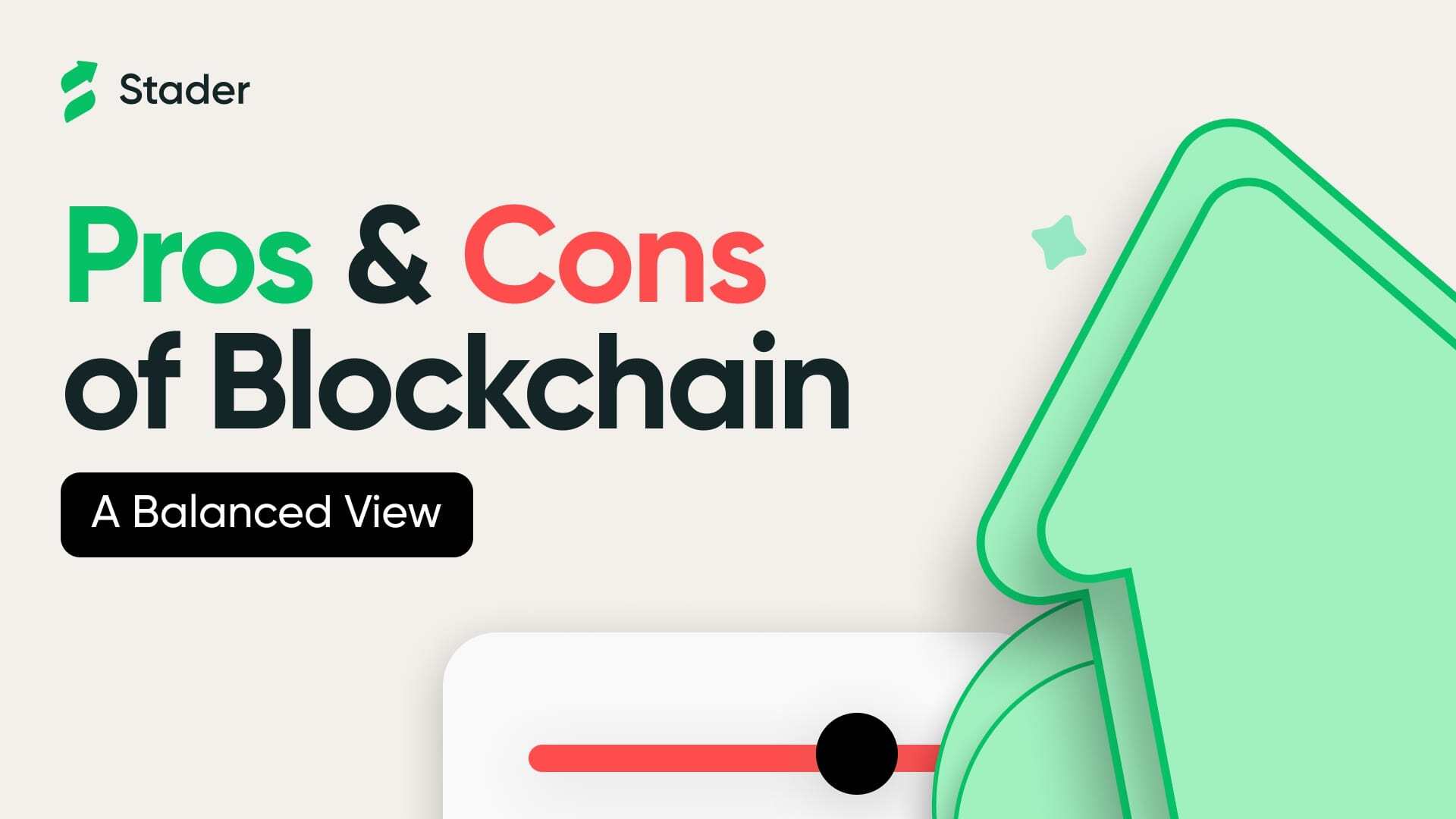Advantage and Disadvantage of Blockchain Technology: Explained

Blockchain technology has revolutionized the realm of secure data storage, gaining fame, especially in the world of cryptocurrencies. But like all innovations, it has its pros and cons. Let's delve into the intricacies of this groundbreaking tech.
Also Read: Ethereum Virtual Machine
Advantages of Blockchain Technology
Strengthened Security
Blockchain offers a fortress of security for vital data. By establishing an immutable and encrypted record, it thwarts fraud and unauthorized interference. It further boosts privacy by anonymizing user data and setting stringent access permissions. The decentralized nature of storing data across numerous computers complicates a hacker's mission.
Also Read: What Is Tokenomics
Unparalleled Transparency
In a world without blockchain, organizations maintain isolated databases. But blockchain, with its distributed ledger, replicates data consistently across multiple nodes. Authorized users on the network simultaneously access identical information, ensuring unmatched transparency. Transactions are recorded with immutable precision, each stamped with time and date. This grants users a clear transaction lineage, almost nullifying fraud chances.
Also Read: Matic Bridges
Immediate Traceability
Blockchain chronicles every touchpoint of an asset, establishing a clear lineage. Especially crucial in sectors where ethical sourcing is paramount, blockchain furnishes undeniable proof of origin. Sharing this data directly with consumers becomes seamless. It also highlights vulnerabilities in the supply chain, pinpointing potential bottlenecks.
Also Read: What Is Cryptocurrency
Expedited Efficiency
Traditional processes, laden with paperwork, are slow and susceptible to errors. Blockchain augments these systems, expediting transactions. Storing documentation on the blockchain eliminates excessive paperwork. And with a unified ledger system, settlements happen swiftly.
Also Read: What Is A Dao
Seamless Automation
Smart contracts on blockchain auto-orchestrate transactions. Upon meeting predefined criteria, transactions progress autonomously. This diminishes reliance on intermediaries, making processes more efficient.
Robust Data Integrity and Auditing
The decentralized architecture of blockchain, spreading data across nodes, amplifies its security, shrinking potential vulnerabilities. Transactions are encapsulated into blocks, forging an irreversible chain, safeguarding against unauthorized edits. With consensus algorithms, transactions earn their validity from node agreements, bolstering data reliability.
Also Read: Smart Contracts
Disadvantages of Blockchain Technology
Blockchain's allure isn't without its challenges:
1. Private Key Dependency: Blockchain hinges on private keys for security. However, lose this key, and accessing your wallet becomes a distant dream. Securing multiple key backups becomes essential, though this poses a security risk in itself.
4. Resource-intensive Mining: Blockchain's Proof-of-Work demands high computational power. Despite numerous participants, only one miner reaps the reward, leading to significant energy wastage.
7. Ambiguous Anonymity: Though blockchain masks identities, it can unwittingly aid illicit activities, becoming an inadvertent facilitator for money launderers.
8. Immutable Limitations: While data integrity is a blockchain hallmark, its immutable nature can be a double-edged sword when errors surface.
9. Scalability Woes: Limited block data capacity decelerates transaction validation. While solutions like Polygon alleviate some concerns, the core challenge lingers.
10. Tricky Hard Forks: Implementing rule changes can result in hard forks, creating parallel cryptocurrencies and resulting in exchange listing delays.
11. Regulatory Hurdles: Legal and regulatory barriers in many regions hinder blockchain adoption.
The Future of Blockchain
Blockchain's trajectory seems boundless. It promises to redefine industries, from finance to supply chain. Innovations are addressing its current challenges, and with increased research, it's poised to become more user-friendly and efficient. As regulations mature and understanding deepens, more sectors will harness its potential, marking blockchain's indelible footprint on the digital landscape.
Also Read: What Is Validator
Conclusion
Blockchain technology, a beacon of data security and transparency, has irrevocably transformed digital transactions. However, it's not devoid of challenges. As we look to the future, it becomes essential to understand both its prowess and pitfalls. Continuous innovation and global collaboration might just steer blockchain to its zenith of potential.
Frequently Asked Questions [FAQs]
Q: What are the key advantages of blockchain technology?
A: The primary advantages include strengthened security, unparalleled transparency, immediate traceability, expedited efficiency, seamless automation, and robust data integrity and auditing.
Q: How does blockchain enhance security in transactions?
A: By creating an immutable and encrypted record distributed across multiple nodes, blockchain reduces vulnerabilities and thwarts unauthorized interference.
Q: What is the role of transparency in blockchain technology?
A: Blockchain's distributed ledger replicates identical data across nodes. Authorized participants access the same information, ensuring unparalleled transparency.
Q: Can you explain the concept of decentralization in blockchain?
A: Decentralization involves spreading data across multiple computers or nodes, ensuring no single point of failure, and boosting data security.
Q: How does blockchain reduce the need for intermediaries?
A: With smart contracts and a trustless system, transactions can auto-orchestrate and validate without relying on third-party verifications.
Q: What cost efficiencies can be achieved with blockchain?
A: Blockchain eliminates excessive paperwork, speeds up settlements, and reduces the need for intermediaries, leading to cost savings.
Q: What are the scalability challenges associated with blockchain?
A: Limited block data capacity makes transaction validation slow. While some solutions alleviate the issue, the core challenge persists.
Q: What environmental concerns are related to blockchain's energy consumption?
A: The resource-intensive mining process, especially in Proof-of-Work systems, leads to massive energy consumption and environmental concerns.
Q: How is blockchain regulated, and what are the compliance issues?
A: Regulatory frameworks vary globally, with many regions still formulating their stances. Compliance issues arise from legal ambiguities and varying regional regulations.
Q: Why is blockchain adoption still limited in some industries?
A: Regulatory challenges, scalability woes, and the nascent nature of the technology deter some industries from full-scale adoption.